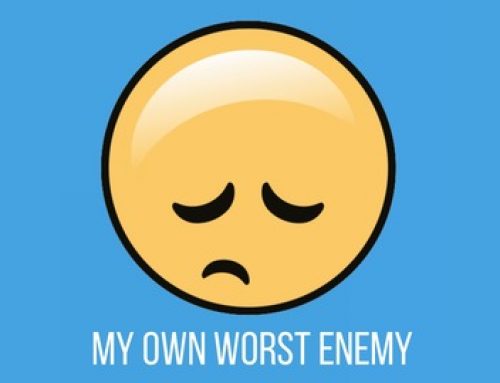How Creative are you?
Creativity is a huge buzz-word today. Most of us would like to be known as creative, innovative, imaginative, a person who thinks “outside the box.”
Why? Because we live in the age of creativity. In fact, in our society, creativity has become a highly valued skill, the crème de la crème of personal qualities. Many of us would gladly give our right arm to be considered creative – to be the new Leonardo da Vinci or Thomas Edison. The next Missy Higgins or Mark Zuckerberg.
Since when and how did the idea of creativity as a sought-after skill or virtue come about?
Historically, we have come through many stages of economic and human development over the last few centuries. Before the 18th or 19th centuries, humans worked mostly in agriculture. This was followed by the Industrial Age where labour was increasingly mechanised and heavy machinery enabled the age of mass production. In the 20th century, we saw the rise of the Information or Knowledge age.
Creativity in the 21st century
We are told we live in the Age of Conceptualisation which is defined by Creativity. Our economic well-being will depend on how well we can come up with new ideas and finding ways to link the old/existing order with the new and the yet-to-come ideas.
Today, more and more adults (whether they work for small or large organisations or for themselves) seek to be creative. This skill, a creative ‘mindset’ and the growth of imagination is being encouraged in children as a standard part of early development through such strategies as creative play.
But how do we become more creative, imaginative and innovative? Is the sort of schooling and deductive thinking currently promoted by school syllabi and teaching methods going to serve us well in the demands of the Age of Conceptualisation and Creativity?
Pink tells us (very rightly) that left-brain thinking (that which is still ingrained at school or used to teach us the 3R’s) is linear, analytical thinking. It needs to be complemented by right-brain thinking which includes emotion such as empathy and inventiveness. These are the crucial skills needed by business. This means creativity and innovation will give us a unique, competitive advantage when our service offering or product is compared to that of the competition.
Where are the new crop of innovators and creators such as Leonardo da Vinci – a polymath – or sculptors like Rodin? Where are the new authors like J.K. Rowling with her ability to churn out Harry Potter books with ease, sketching superb story lines and inventing a host of characters? Are there some great poets waiting to burst on the world scene such as some modern-day rappers and songwriters (such as Prince and Lin-Manuel Miranda)?
Many years ago, Rollo May wrote in his book The Courage to Create: “Creativity is the process of bringing something new into being. Creativity requires passion and commitment. It brings to our awareness what was previously hidden and points to new life.” Additionally, the process of being creative has a remarkable effect on us according to May: “The experience is one of heightened consciousness: ecstasy.”
Creativity involves two processes: thinking and turning the idea into reality or producing a unique service or product. If you have ideas but don’t act on them, you are imaginative but not creative. So your product or service has to be novel (new & unique) and relevant (i.e. fill a need).
What Can You Work On?
The words innovation, imagination and creativity are flung around freely. Yet many of us think that to be creative, you have to be unique, possess superlative skills and invent something every day or week. We think of Albert Einstein as being creative. Yet others think of Steve Jobs or Bill Gates; some in business think of Sir Richard Branson and yet others laud English engineer and inventor, James Dyson.
Author Linda Naiman says that ‘Creativity is characterised by the ability to perceive the world in new ways, to find hidden patterns, to make connections between seemingly unrelated phenomena, and to generate solutions.’
Sir Richard Branson (CEO of the Virgin Group) believes in the A-B-C-D principle or Always-Be-Connecting the-Dots – it’s a simple, powerful way of looking at creativity. Seth Godin, author, entrepreneur and marketer, is similarly passionate about the need to make better connections. He wrote about how students today are educated in collecting dots, but almost no school time is spent teaching students the skills necessary to connect those dots. This requires confidence and creativity, to think bigger and laterally, rather than just pass exams. “The magic of connecting dots is that once you learn the techniques, the dots can change but you’ll still be good at connecting them.”
Clayton Christensen and his team in their book The Innovators DNA say that there are five essential skills and behaviours to keep your brain sharp for innovation and to generate ideas.
These are:
- Associating i.e. drawing connections between questions, problems, or ideas from unrelated fields
- Questioning: posing queries that challenge common wisdom
- Observing: scrutinizing the behaviour of customers, suppliers, and competitors to identify new ways of doing things
- Networking: meeting people with different ideas and perspectives
- Experimenting: constructing interactive experiences and provoking unorthodox responses to see what insights emerge.
(See Jeff Dyer, Hal Gregersen & Clayton M. Christensen’s book: The Innovator’s DNA: Mastering the Five Skills of Disruptive Innovators).
Think of it in terms of an acronym AQONE – A Queen Of New Entertainment! Go out and make a royal noise!
To more basic and practical ways of accessing creativity:
One of history’s most prolific inventors, Thomas Edison, (he invented the light bulb and over 1000 other patented devices), used a very clever way to access his creativity. He somehow knew that the best ideas come to people when they are in a relaxed state. His method was to sit in a comfortable chair with ball bearings in each hand, and soon he would doze off. As he became drowsier, his body would become more relaxed, until the time his fingers uncurled and the ball bearings dropped to the floor, making a loud clattering sound. He would come awake in a startled state and he would write down whichever innovative thought was top of mind.
This particular state of mind is known as a theta state. Our brain has three different kinds of brain waves: alpha, beta, and theta. Theta brain waves – the ones most useful for creativity and innovation – are very rare in adults though fairly common in children. Ever come across a group of children talking and you will frequently hear them come up with wild ideas.
The theta state in adults is mostly observed when people are either in the early stages of sleep or in a deep meditative state – stuff that is not encouraged or is practical at work.
So, if we want adults to be creative in the workplace, how do you engage the theta state in adults when they are at work? How can we or our teams get into a theta state of mind to become more creative? Here are some suggestions:
- Ask some team members to intentionally play the role of Contrary Ann and/or the Devil’s Advocate (Remember: Edward de Bono’s Six Thinking Hats) This helps to avoid groupthink or keeping the status quo.
- Use a part of your internal company website (the intranet) for social networking in order to crowdsource ideas. This is similar to brain-storming where the rules are that no idea should be shot down but all ideas considered. The internal crowdsource method allows team members to comment on initiatives at a time when they feel most creative – either from home or at work. Investigate optons such as Yammer.
- If you decide to do brainstorming, try and do it outdoors or in rooms which don’t remind you of an office. E.g. a relaxed lounge-room type of setting with bright colours and relaxing décor such as beanbags.(Many offices have these spaces now available e.g. Microsoft, Google and Nestlé)
- Make meetings more interesting and creative. Get team members to read something funny, absurd or totally irrelevant out loud. Get people to tell funny stories or tell you about their favourite funny incident. This will take them out of their ordinary (boring) work state.
- Try and declutter people’s minds. If your team has been trying to come up with creative solutions to a problem unsuccessfully, give them a break. Let them go out to a basketball court or play with Frisbees outside. This will declutter their minds.
- Don’t just use words to convey an idea. Ask employees and lead yourself by using pictures, symbols and diagrams to describe their objectives. Draw mind-maps, construct info graphics, play with ideas (using pictures cut out of magazine articles) or ideas written on sticky notes. Why? Some of us are Visual, others are Auditory (hearing-related) and many others Kinesthetic (we learn by way of engaging in physical activity). These methods feed in to the Connecting the Dots method which I’ve described below.
(See: Differentiation Through Learning Styles and Memory by Marilee B Sprenger).
Hence, to inspire creativity and innovation among your team, the leader needs to think artistically (like a Leonardo or Raphael.) This means placing limiting ideas, controls, boundaries, logic, rationality, and even facts (at times) to one side for the purposes of exploring the potential of radical ideas. To be creative, you need to embrace flexibility, passion, playfulness, images and people. Because sometimes – just like Edison – you’ve got to fail your way to success. You have got to be okay with failure or dropping the ball once in a while or many times. It may take some time to train our brains to be creative, but allowing our brains to access the theta state or the lucid dreaming state or after we do deep meditation (meditation is known to help with anxiety, depression, trauma and stress) will help us to access creativity. And when the great ideas come, stop criticising yourself because these are the precursors of creation and innovation!
Instead of being mired in the nitty-gritty or the little details, take a helicopter point of view. Try to see the bigger picture, a place where you can make new connections – and make these new connections more interesting, unusual, distinctive, better. Even if you wonder how this will work or if it will make money, don’t be put off. The more connections you add, the more dots you connect in new and unusual ways, you will soon find newer ways to implement and sell your unique and new ideas in ways you never imagined.






